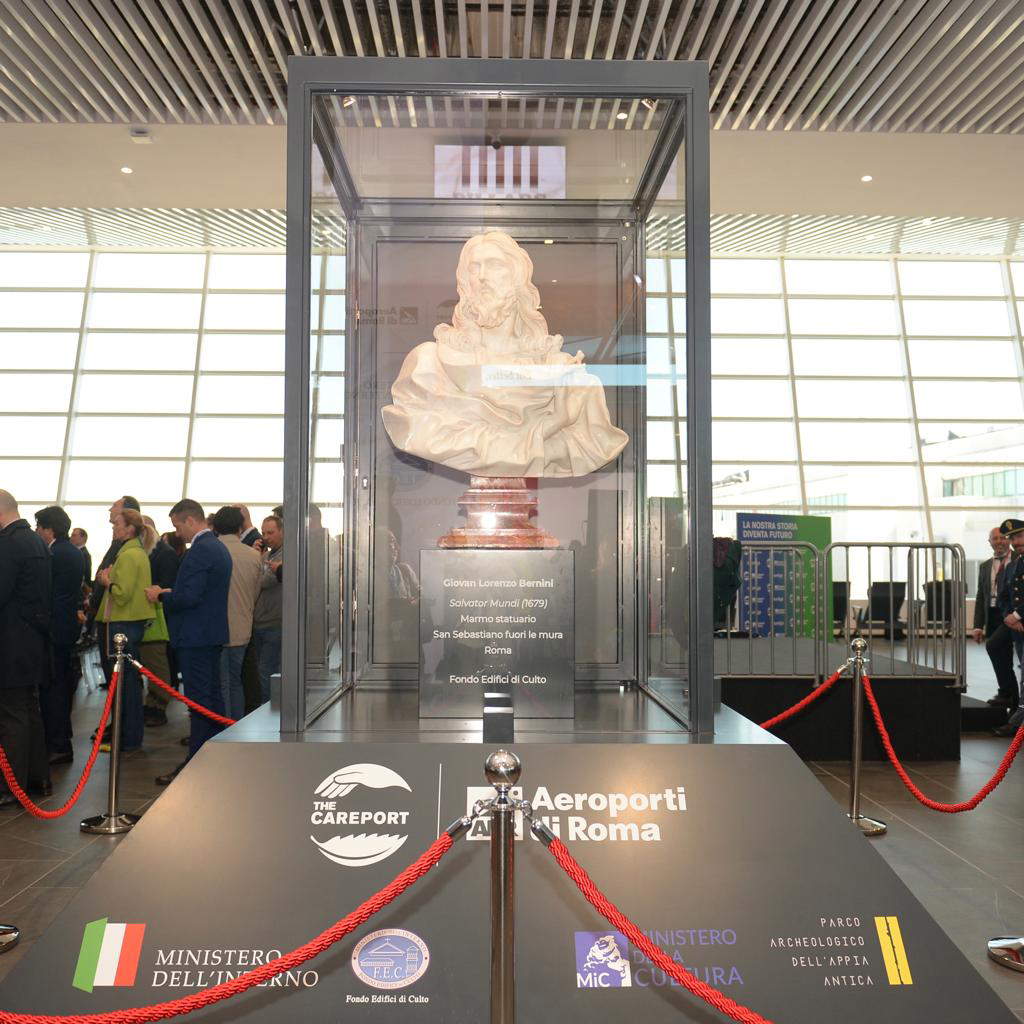Fetishes and Replicas. When artwork is exhibited outside of canonical contexts.
In order to reason around the issue of masterpieces exhibited in contexts outside the canonical ones of fruition (the museum, the church, the gallery, etc.) it is perhaps necessary to ask a preliminary question: what opinion does the person who decides on such operations have of his or her audience?
The suspicion is that behind these relocations there is a substantial over-interpretation of what the so-called public desires: in short, it is believed that passengers waiting for boarding or visitors to a fair need to consume such a fruition experience, they need to enjoy the contact with the decontextualized work, blissing themselves with this vision.
It is a kind of dictatorship of the (supposedly) casual audience, based on a demand not explicitly made by the audience itself. A conception that implies another thought: if “people” do not go to the work (to the museum, in its natural context) it must be the work that goes to the people.
True or not, come to think of it, proposals of this kind are the result of a deficit of commitment, or if you will, a poverty of narrative: why waste time organizing, for example, an exhibition in contexts that would also have adequately capacious spaces (such as an airport) when it is enough to bring Bernini to the waiting room? And patience if in order to do so in total safety the masterpiece I have to armor it in a hideous case, transennate it, denying the potential beneficiary the aesthetic quality of fruition, the thrill of eye contact. It doesn’t matter, it seems, where you are, the hubbub of the context doesn’t matter, just knowing that x meters away from you is “the name,” the fetish.
In the age of the Grand Tour, it is theauctoritas of the system that determines the status of an artifact as a masterpiece; today the directors of these kinds of operations believe that a masterpiece is such if it is reified in its status as an object. However, creating the paradox, in the age of reproducibility of reproduction, of claiming that uniqueness can be placed in any context and remain so, indeed, become even more unique precisely because it is decontextualized.

As for works reproduced in a way that is almost faithful to the original thanks to technology, I think sincerity is enough: if the presence of the fake is declared and reported correctly, it can have its own specific function, for example in exhibition contexts in which the context of origin of other originals is reconstructed.
But, precisely, it is necessary not to play hide-and-seek because the respect of the beneficiary, who must be enabled to distinguish what is real from what is not, is at stake.
And speaking of understanding, technology has made it possible to create in recent times another type of proposal, that of the so-called “experience” exhibitions, where the work is absent altogether and where the technique allows, as those who propose them to mayors halfway across Italy like to say, to “enter inside the work.” The purpose of “immersing” the visitor in the masterpiece that is not there is based on the assumption that by these means one can grasp what one would not see even in the presence of the Caravaggio or Van Gogh on duty: the larger the image to be enjoyed, the more authoritative the visiting experience will be.
These are not only futile but also profoundly diseducative proposals that passivize fruition, debase the act of looking as a cognitive process, and defuse looking as a moment of active understanding and curiosity.
Ultimately, whether fetishes or digital replicas, fairs or fashion shows, there is a strong suspicion that these initiatives serve almost exclusively those who propose them and very little to those who are thought to enjoy them. Perhaps it would make sense to ask the supposed “dictator,” the public, what it thinks about this.
This contribution was originally published in No. 18 of our print magazine Finestre Sull’Arte on paper. Click here to subscribe.
Warning: the translation into English of the original Italian article was created using automatic tools. We undertake to review all articles, but we do not guarantee the total absence of inaccuracies in the translation due to the program. You can find the original by clicking on the ITA button. If you find any mistake,please contact us.





























